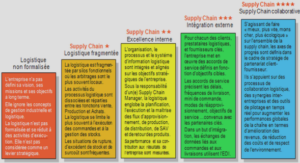Impact of peak SWE on low flow during summer
To explore in more details the memory effect of snowpack conditions and how long water from snowmelt contributes and affects low tlow in summer. on summer low tlows, the peak SWE (swemax) was correlated with the minimum 7-day low tlow every 10 days for the 12 selected basins separately (Fig. 3), similar to the approach used by lenicek et al. (2016) for catchments in Switzerland. The 10-day period was chosen to be large enough to capture tlow recessions while keeping a high temporal resolution for the analysis. These 10 days correlation coefficients show the temporal sensitivity of low tlow conditions to preceding winter accumulated snowpack.
The intluence of peak SWE on summer low tlow tends to increase over time and peaks between late August and mid-September, with however heterogeneity between basins (Fig. 3). Two basins stand out from this general trend: the northemmost basins Godbout (ID 1) and York (!D2), for which SWE is rather weakly but negatively correlated with late summer Q7min. The peak SWE is also negatively correlated with Q7min early in summer in five basins (Etchemin, Bécancour, Ouelle, Famine, Nicolet) such that larger peak SWE is associated with a lower Q7min in early/mid-lune. The snow disappearance date (meltoutdoy) typically occurs in April-May, varying by ±1-2 weeks each year in a given basin and increasing towards higher latitudes. In contrast, the occurrence date of Q7min occurs on average from mid August to mid September, without any latitudinal trend, but with large interannual variability (~ ±1 month). When compared across aIl 12 catchments, the correlation between the preconditioning variables and Q7min in September, when the correlation with peak SWE is highest (Fig. 3), shows that the minimum discharge is positively correlated with peak S WE in 10 of the 12 basins, with correlations between 0.21 and 0.41 (Fig. 4). However only five basins pass the significance threshold (p < 0.05). The smaller number of observations in individual basins explains the higher threshold correlation for statistical significance, compared to the pooled basins analysis in Fig. 2. Despite the significance of the correlations, their values are generaIly not strong, suggesting that swemax plays a secondary role on low tlow variability compared to summer conditions.
The correlation between swemax and September Q7min also displays significant inter-basin heterogeneity. Other winter predictors (swemaxdoy, meltoutdoy and meltrate), are most often positively correlated with Q7min, but are rarely significant, except in Acadie and Batiscan. Fig. 4 highlights a strong and significant correlation between Q7min and accumulated rainfall (RAIN) in late summer (September) in all the studied basins. The correlation coefficients vary between 0.28 in Famine and 0.62 Godbout. Conversely, the accumulated ETR has significant negative effects on late summer Q7min only in three basins (Godbout, Bras du Nord and Batiscan) while a positive effect is found in three other basins (Ouelle, Etchemin and Beaurivage). While higher ETR should in theory lead to reduced low flow, the positive correlation between RAIN and ETR (Fig. 2) complicates the Interpretation of simple bivariate relations.
To further examine the combined influence of rainfall and ETR on low flow, Q7min was correlated with the net rainfall (NE TRAIN) , i.e. the available water for runoff. The correlation between Q7min and net rainfall either increases or decreases slightly compared to the correlation with rainfall alone, suggesting that the magnitude of Q7min is more related to rainfall than evapotranspiration in summer. Interestingly, Q7min is positively and significantly correlated with its date of occurrence (Q7mindoy) in four basins, suggesting that later low flow in September have a higher magnitude, contrary to expected when river flow is dominantly fed by aquifer discharge. These results highlight that to better discriminate the influence of the respective hydroclimate predictors, their multivariate influence on low flow must be assessed, which is explored in the next section
Low flow response to multivariate antecedent hydroclimate conditions
As highlighted in the previous section, Q7min in summer can be related to a combination of preconditioning factors, with heterogeneity between basins. Thus, a hierarchical regression model was developed to investigate the combined effects of hydroclimate predictors, take into account the potential influence of catchment characteristics on summer minimum discharge, and to better tease out the memory effect of snow coyer on summer discharge. Collinearity tests using the variance inflation factor (VIF) showed that the meltoutdoy had a VIF larger than the rule ofthumb value of la for collinear variables (O’brien, 2007) and was thus remove for the predictor set. As shown in Fig. 2, the snow disappearance date is correlated with the maximum SWE and the melt rate, as a thicker snowpack tends to last longer into the spring and increases the mean melt rate.
The varying-intercept model (model 2), which accounts for random variations in Q7min between basins, significantly improves the performance of the model compared to using fixed hydroclimatic effects only (model 1) (Table 3). This was expected, given the basin heterogeneity in Q7min correlations highlighted in Fig. 2 and 3. Adding basin descriptors in model 3 further improve the predictive performance relative to model 2, suggesting that part of the inter-basin random variations can be explained by differences in basin characteristics (Table 3). This model was thus retained as the best model to explain Q7min interannual variations (Ale = 611.77). Adding interactions between predictors (fixed effects) did not improve the model further. Results for the hierarchical model (model 3) are presented in Table 4. Fixed effects, i.e. first-Ievel hydroclimate variables and second-Ievel basin descriptors, explain 47-54% of the interannual variability in Q7min (marginal R2 = 0.47-0.54) while random (inter-basin differences) effects account for 28-38 % of the variance in Q7min (conditional R2 = 0.78-0.85).
It can be observed that the relation between swemax and Q7min for the whole summer is similar to the relation seen in September, which is because Q7min occurs on average in late summer (Table 4). Swemax has a positive influence on Q7min throughout summer (a = 0.15-0.25, p < 0.05), in accordance with the bivariate correlation analysis. The influence is highest in June and August. Swemaxdoy is also positively related to Q7min in June-September (a = 0.14-0.19,p < 0.05), so years with delayed melting and a later peak SWE tend to result in higher minimum discharge at the end of summer. The melt rate has a negative influence on Q7min in June (a = -0.15) and August (a = -0.18). This is interpreted to reflect the fact that slower melting of the snowpack favours infiltration, which in tum would support subsurface drainage contributions to baseflow in early summer, and aquifer recharge which would favor a delayed contribution to low flows in August.
Discussion and conclusion
Our resu1ts high1ighted the impact of antecedent hydrological conditions on summer low flow in twelve southern Quebec rivers with a natural regime and significant variability in winter and summer precipitations. The global bivariate correlation analysis (cf. section 3.2) showed that snow conditions in winter can affect low flow the following summer, with maximum SWE showing the clearest positive association with Q7min. However, the basin-level correlation analysis showed significant heterogeneities among these basins. Overall, the bivariate correlation results show that the accumulated winter snowpack affects groundwater recharge and thus river flow during dry summer periods, as found in other snow dominated areas (eg. Beaulieu 2012). This is in accordance with the results found in mountainous basins: in the Sierra Nevada in western USA (Godsey et al., 2014), in the Swiss Alps (Jenicek et al. 2016), and in Austria (Laghari et al., 2012) where SWE showed the best predictive ability for the 7-day low-flow among aU winter-related predictors. Our work demonstrates that across most of studied basins, the effect of maximum SWE on Q7min is more important towards the end of summer (AugustiSeptember).
This delayed response to snowmelt is interpreted to resu1t from the predominant recharge of aquifers during spring snowmelt followed by the progressive outflow of aquifers to streams in summer, as documented in several cold regions (Aygün et al., 2020b; Boumaiza et al., 2020; Jasechko et al., 2014). This is different than the situation in low elevation Alpine and pre-Alpine catchments, where the sensitivity of Q7min to SWE was found to decrease over the course of summer (Jenicek et al., 2016). This could explain that the transfer modes of « snow anomalies » are different, i.e. via the slow discharge of aquifers in Quebec, and via faster subsurface runoff in alpine basins. However, for two basins (York, Godbout), a thicker snowpack in winter was related to lower low flows volume in summer. This is possibly because the basins have a maritime climate, with year-round precipitation abundance, which could explain the low dependence of streamflow on aquifer recharge by snowmelt. The hierarchical regression approach used in this study allowed examining the combined effect ofhydroclimate predictors while accounting for inter-basin variability in low flow.
Our results show that both summer climate (rain and evapotranspiration) and winter conditions (snow storage and melt dynamics) influenced summer low flows interannual variations. Cumulative summer precipitation is the dominant control on summer low-flow variability, with evapotranspiration losses and snow storage play significant but secondary roles. Similar results regarding a large influence of rainfall regimes on low flows have been documented for historical river summer low flows in New England (Hodgkins et al., 2005), for lower elevation basins in Switzerland (Jenicek etaI., 2016) and southeast St. Lawrence watershed in Quebec (Assani et al., 2011). While interannual variations in rainfall is unsurprisingly the first controls on summer low flows, antecedent winter conditions still represent an important source of interannual variability, of similar magnitude than ETR losses. Differences are found between bivariate correlation results (global and by basin) and the multivariate analysis. While sorne predictors (swemax and RAIN) have consistent relationships with Q7min, partly because these two variables are not related, other variables have different effects when the influence of the other predictors is taken into account, which is not the case in the bivariate analysis. As such, ETR and Q7mindoy have more consistent negative relationships with Q7min once the other predictors are taken into account in the regression models.
REMERCIEMENTS |






